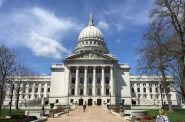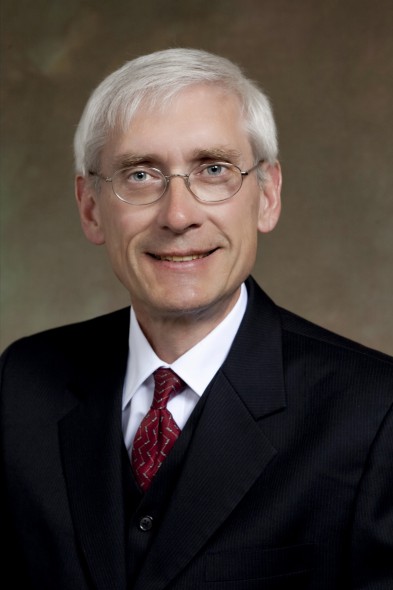Why Schools Are Increasingly Unequal
Act 10 and era of school referendums causes bigger gap between haves and have nots.
State Superintendent Tony Evers woke up at 3 a.m. the morning after the election to check the results of school funding referendums in the state. The results were remarkable: 55 of 67 referendums had passed.
“I was amazed. More than 80 percent of the referendums were passed by voters concerned about government spending,” says Evers, noting the support for Donald Trump. “These same people turned around and said tax us for our schools.”
To Evers, it shows the support voters have for their local schools. But it also underlines a growing problem in the state. There is a yawning inequity between school districts as a result of strict school spending caps, which can only be overcome by local referendums and which are difficult to pass in poorer school districts. The situation is exacerbated by the impact of Act 10, which also handicaps poorer districts. Neither measure may have intended to create inequity, but that’s clearly what is happening.
As Gov. Scott Walker and Republican legislators have used the spending caps to hold down school spending and local property taxes, more and more school referendums are passing.
“Since the start of 2012, more than half of public school district (242) have passed referenda to exceed state imposed revenue controls,” according an analysis by the state Department of Public Instruction. “So far in 2016, 154 questions have been posed by 111 districts at a success rate of 79.22 percent.”
In last week’s election, “Voters in the Germantown School District… agreed to borrow $84 million for a new field house, performing arts center, swimming pool and other projects,” the Journal Sentinel reported.” And in Franklin Public Schools, voters approved $43.3 million for a new middle school.“
School referendums, in short, are increasingly becoming, not the exception, but a normal method of funding schools. Except in poorer rural and urban school districts like Milwaukee which have far less property tax wealth and little chance of passing such ballot provisions. “If we continue down this road, we’re still going to have 20 percent of districts not voting in favor and we’ll become a state of haves and have-nots,” says Evers.
Walker saluted the situation, saying Act 10 has freed up public school leaders to “put the best and the brightest in our classrooms.”
Greenfield human resources chief Mark Kapocius compared it to the Green Bay Packers putting together the most skilled players. “It’s (like I am) Ted Thompson, trying to put together a team of the best 248 professional educators I can,” he told the paper.
But as Evers notes, smaller market NFL teams get revenue sharing from the richer teams. “If this was like Major League Baseball, the wealthy districts would have to pay a penalty tax to the smaller districts.”
Actually there is a penalty tax of sorts. The state’s school funding formula factors in a school district’s property tax base, awarding proportionately more money to property poor districts. But the formula began to get watered down in the 1990s, leading to ever greater spending differences between districts.
DPI figures show that the average revenue available per student is $13,031 per student statewide, but varies widely per district, from $10,883 in Milton to $26,477 in North Lakeland. That massive difference helps explain why some districts can’t afford to get in bidding wars for teachers.
“If you are a higher-paying district, the good teachers will flock to you,” Louise Blankenheim, district administrator in Kiel, told the newspaper. But in Kiel, voters have rejected school funding referendums eight of nine times since 2008, and the district is in no position to compete with better funded districts.
School districts most commonly give raises of $1,000 to $5,000 to lure teachers they want, but in some cases pay up to $20,000, the story found.
But Milwaukee Public Schools and other poorer districts can’t afford to pay even the smaller raises.
To discourage defections by teachers, districts have added breach-of-contract penalties that go as high as $2,000-$3,000. “But teachers rarely end up paying them — the district that hires the teacher typically pays the losing district as part of the deal,“ JS reporter David Umhoefer explained.
Ultimately, of course, the taxpayers pay for these penalties. “As a taxpayer, it doesn’t make sense,” Rick Penniston, former principal at East Troy High School, complained to the paper.
Wisconsin’s constitution includes language that essentially requires a system an equal education for all: “The legislature shall provide by law for the establishment of district schools, which shall be as nearly uniform as practicable.”
But when North Lakeland has two-and-a-half times more to spend on its schools than Milton, it’s clear that Wisconsin’s schools are nowhere near as uniform as practicable. That might lead to court cases challenging the current system.
Wisconsin had once been an above average state both in average spending on education and in equity between districts. Those days are long gone. By 2012-’13 Wisconsin ranked 31st in per-pupil spending.
But that statewide average hides the differences between the haves and have-nots. This map created by National Public Radio gives some sense of how the spending can vary. In the decade prior to Act 10, the gap between rich and poor districts grew by 44 percent nationally and Wisconsin was by then among 16 states where poor districts get less funding per pupil.
Since then the gap has grown as a result of referendums, but national comparison figures are not yet available.
A recent study found students in the wealthiest school districts in Wisconsin and elsewhere are four grade levels above students in the poorest school districts. Much of that is because low-income students perform more poorly than well-to-do students. But some of the difference is because these districts are less able to afford good teachers, facilities and educational programs. As with the small market pro teams, these schools are far more likely to be losers.
Murphy's Law
-
Is Legislature Biased Against Working Class?
 Apr 4th, 2024 by Bruce Murphy
Apr 4th, 2024 by Bruce Murphy
-
Associated Press Will Decline in Wisconsin
 Mar 27th, 2024 by Bruce Murphy
Mar 27th, 2024 by Bruce Murphy
-
City Attorney Race Is Vitally Important
 Mar 25th, 2024 by Bruce Murphy
Mar 25th, 2024 by Bruce Murphy
















Bruce, you are riot. About 10% or so of the districts, 429 of them are poorly run by the Left and need to go to referendums and explain their mismanagement to their voters. In my 50 years in Tosa we had only one that I can remember. Half went down. People are not stupid. They can figure things out and it is the best way to do things things locally.
The voters in state are returning the GOP with their ideas and philosophy.
when the educates fix education then their will be bro many.
Since 1970 we have increased spending tenfold for 50% fewer kids and still scores tests go down. We need leadership from the leaders in MPS and another ten or so districts, fewer administrators, and better programs to teach kids to read. You really think that the site will give embrue money for salaries and bennies when only 15% of third graders can read?
Grow up kiddies.
Rural schools in Wisconsin are so sad. Low test scores. Low energy. Terrible. Mr. Ever’s is going to help. It’s going to be tremendous. You won’t believe how scores go up in these schools. Off the charts. Just the best. Let’s all help Tony make Wisconsin’s rural schools great again!
@ Wisconsin Conservative Digest
Where are you getting your statistics from? Let’s at least start the conversation from a place of common ground.
I have written about this for years. I get them from Assemblymen and the Ref. Bureau and other research. Most of you have opinions but do not know any facts.
Evers has been round for decades and they have fallen. he is not much of a leader. Check it out Dummies.
What people may be missing here: School districts operate on different pots of money that cannot be commingled. The referenda Bruce Murphy cited, unless I am missing something, involved selling bonds to borrow money to build school buildings. That does not mean the districts necessarily get to increase their operating funds. Anyway, the point that rich districts have more resources, and are more likely to pass such referenda, is nothing new. What is new is the declining effort to equalize funding between rich and poor.
Money is not the problem. Notice in these threads it is always the money and that is fro the Educrats. Anyone see here anything bout the kids?
Kurt, three things are different about the referendums: (1) big increase in the number; (2) big increase in percent successful; (3) Many are to raise the revenue limit in that district (whereas, as you note, referendums traditionally were about money for new buildings, athletic fields, etc.). So the referendums are adding more money on a couple fronts but only for more well-to-do districts.
Having taught in elite private schools, rural schools, suburban schools, and in urban schools, I cannot imagine why anyone would think money doesn t make a huge difference. If it didn’t, why would elite private schools spend tons of un-needed money? Why would affluent districts vote to spend more? A few years ago I went from Whitefish Bay ( a suburban one high school district) back to BayView (MPS) and the difference in every aspect of funding (facilities, salaries, teaching supplies (we bought our own copier paper!) couldn t have been more stark. It was like I crossed the river Styx!
Urban districts have a much more dramatic set of of special needs to accommodate and overcome due to the poverty and associated instability and discontinuity experience of the children. Education is a bridge. Do we really think we can build educational infrastructure at half price? Do you want to drive over a cut rate bridge?
My class sizes at Bay View and now Rufus King are universally50-60% greater than any class I ever had at WhitefishBay
or the Latin School of Chicago!
Great article Bruce. Sick of ignorant fact denying theoretical replies.
Money, we have shower the schools with money the last 45 years. Spending has increased tenfold for 50% fewer kids, yet scores are down..
I am from Wis., you want more money, show me.
We are not stupid in this state, all the money goes in educrats pockets. We had better scores in one room schools.
WCD, why not cut spending 50% on schools, will that make them better?
Another dumbass comment.
“I decided right now I’m changing the name of the album to ‘Throw MOney.'” After all, MOney = Education. N’est ce pas?
I m sorry, but there wasn’t any testing in the one school room days. There was no “high school”. My oldest relatives (in their 90 s) noted that they had very little science or math in high school, and no foreign language. I come from a “highly educated family” in which 1 of my 4 grandparents attended one year of college. 2 of the 4 left high school. None of my parent’s generation learned more than rudimentary algebra or geometry. None would be college ready by today’s standards!
Nobody said you are stupid, just that WE are not providing very important (in today’s world) educational opportunities for more than a slice of our children, and that slice is overwhelmingly affluent and suburban. Again, why would they throw money at education if it didn’t confer significant advantage to their children. Of course NOT providing opportunity to the REST of the children also confers an advantage, doessn’t it!? But isn’t SELF INTEREST always at odds with equity and justice?
Wisconsin is winning the race to the bottom! My children don’t even want to live work,or raise children here!
WCD, you complain about how spending has gone up 10x, is a 50% cut too little?
Also, you tell us about your plan to break up MPS into many districts… why did Walker & GOP pass it? Why would they leave a great idea on the shelf collecting dust?